Clear communication shapes how teams work, grow, and succeed. When HR teams communicate well, employees understand their roles, feel connected to company goals, and know where to find the support they need. But getting HR communication right takes more than just sending emails and hosting meetings.
This article covers how modern HR operations build effective communication strategies. You’ll learn practical approaches, discover useful tools, and see how leading companies keep their teams informed and engaged.
What Is HR Communication?
HR communication covers all the ways HR teams share information across an organization. It includes everything from essential updates about benefits and policies to news about company changes and initiatives. Effective HR communication helps employees understand career development opportunities, receive performance feedback, and stay connected to company culture.
HR communication as your company’s internal information network connects leadership with employees, helps teams collaborate, and keeps everyone moving in the same direction. When done well, it creates clarity and builds trust.
What Is an HR Communication Strategy Important?
A thoughtful communications strategy does more than just share information. It builds a stronger, more connected workplace. Here’s why it matters:
1. Trust and transparency
Effective HR communication creates authentic connections with employees. When teams get consistent, honest messages, they understand their place in the company’s vision. This turns employees into genuine ambassadors for your organization, not just workers completing tasks.
2. Employee connection and engagement
Connected employees stay longer and work better. Good communication helps teams understand how their work fits into bigger company goals. It keeps remote workers feeling part of the team and helps office staff stay in sync. Research shows that engaged teams achieve higher productivity and much lower turnover rates. Regular, meaningful communication makes this engagement possible.
3. Clear performance goals
Success starts with clarity. When HR communicates performance expectations well, employees understand precisely what they need to achieve. This includes setting clear metrics and providing regular feedback. It also includes giving teams access to training and support. Well-communicated goals help employees focus their efforts and measure their progress.
4. Positive workplace culture
Communication shapes company culture every day. Regular recognition of achievements, open channels for feedback, and clear company values all contribute to a strong employee experience. When HR teams prioritize effective communication, they create an environment where people feel heard and valued. This leads to better morale, stronger teamwork, and a workplace where talent wants to stay.
5. Consistent company voice
A strong internal voice builds recognition and trust. Employees know what to expect when HR messages maintain a consistent tone and style. This reliability matters whether sharing the good news about company growth or navigating challenging changes. A consistent voice helps employees quickly understand and trust company communications.
6. Conflict prevention
Good communication stops problems before they start. Open dialogue helps teams resolve minor disagreements before they grow. When everyone understands expectations and processes, workplace friction is lower.
7. Change management
Clear communication allows companies to tackle change management smoothly. For example, consider a company undergoing an organizational structure change or acquiring a new company. Clear and effective communication from HR allows organizations and its people to understand what’s happening, prepare for the change, and understand who to ask questions.
Types of HR Communication
Modern HR teams use various channels to reach employees effectively. Let’s explore the main types and how to use them well.
1. Email communication
The best HR emails keep messages clear and actionable. Regular newsletters work well for company updates, while targeted emails serve better for personal or time-sensitive information. Consider using email templates for consistent messaging about everyday topics like benefits enrollment or policy updates.
2. Digital workplace platforms
Intranets are hubs that let employees find policies, submit requests, and stay updated on company news. Modern HR teams run on HCM platforms, which include communication features like social features, document libraries, and mobile access. This makes information available whenever employees need it, wherever they work.
3. Instant messaging and collaboration tools
Tools like Slack and Microsoft Teams changed how HR teams communicate daily. These platforms work best for quick updates and building community. Create dedicated HR channels for different types of information, but keep the tone conversational. Remember that not all messages belong to instant messaging.
4. Video communication
Video meetings and recordings add a personal touch to HR messages. For example, town halls work well for significant announcements. Regular video updates from HR leaders help build connections with remote teams. Consider recording important sessions for employees who can’t attend live.
5. Mobile apps
Company mobile apps keep teams connected from anywhere. These work well for shift workers or remote teams. Good HR apps include push notifications for urgent updates and simple ways to submit requests or questions.
6. Face-to-face communication
Regular office hours, team meetings, and one-on-one sessions build strong connections. Use these moments for more sensitive discussions and detailed feedback. Even in hybrid workplaces, plan for some face-to-face HR interaction when possible.
7. Document and policy communication
Clear documentation is at the center of good HR communication. Employee handbooks, policy guides, and process documentation need regular attention and updates. Store these in a central digital location in simple, searchable formats.
How to Create an HR Communication Strategy
Trying to build an effective communication strategy? Here’s how successful HR teams plan their approach.
1. Define your goals
Start by identifying what you need to achieve. You may want faster policy adoption, better benefits understanding, or stronger employee engagement. Set clear metrics for success, like improved survey scores or higher participation in programs.
2. Know your audience
Think about what will work best for your teams. Engineers prefer direct, data-focused messages while sales teams respond better to stories and examples. Consider factors like location, role, and work schedule when planning to reach them.
3. Choose your channels
Pick the right tools for your messages and teams. Important policy changes need a mix of email, meetings, and documented guidelines. Quick updates work better on chat platforms. Match your channels to both your message and your audience.
4. Create clear processes
Establish who handles different types of communication. Define when to use each channel and how to maintain consistency. Good processes help teams communicate confidently. They also keep everyone on the same page.
5. Plan for different scenarios
The only thing constant is indeed change. Create playbooks for crisis communication, major changes, and routine updates. Include backup plans for when communication channels may be down or inaccessible.
6. Create feedback loops
Communication works both ways. Build in regular ways to gather employee input. This could include surveys, focus groups, or digital feedback tools. Use what you learn to improve your communication approach. This shows employees that their voice matters.
9 Best HR Communication Tools
HR teams rely on platforms and tools to keep their workforce connected. Here’s a look at leading platforms, according to G2.
1. Connecteam
- G2 Rating: 4.7/5
- Price: Free for up to 10 users
- Best For: Managing deskless workers
Connecteam brings together scheduling, communication, and training in one mobile-first platform. It works especially well for companies with field teams or dispersed workforces. The platform makes daily updates and team coordination simple.

2. Workvivo
- G2 Rating: 4.8/5
- Price: Must contact sales
- Best For: Building employee engagement
Workvivo creates a social-style space for company communication. Its strength lies in building community and celebrating team achievements. The platform feels natural to use, making adoption rates high.

3. Blink
- G2 Rating: 4.7/5
- Price: Must contact sales
- Best For: Frontline team communication
Blink specializes in keeping frontline teams connected through chat and document sharing. Teams appreciate how it separates work communication from personal messages. The responsive support team is also helpful.
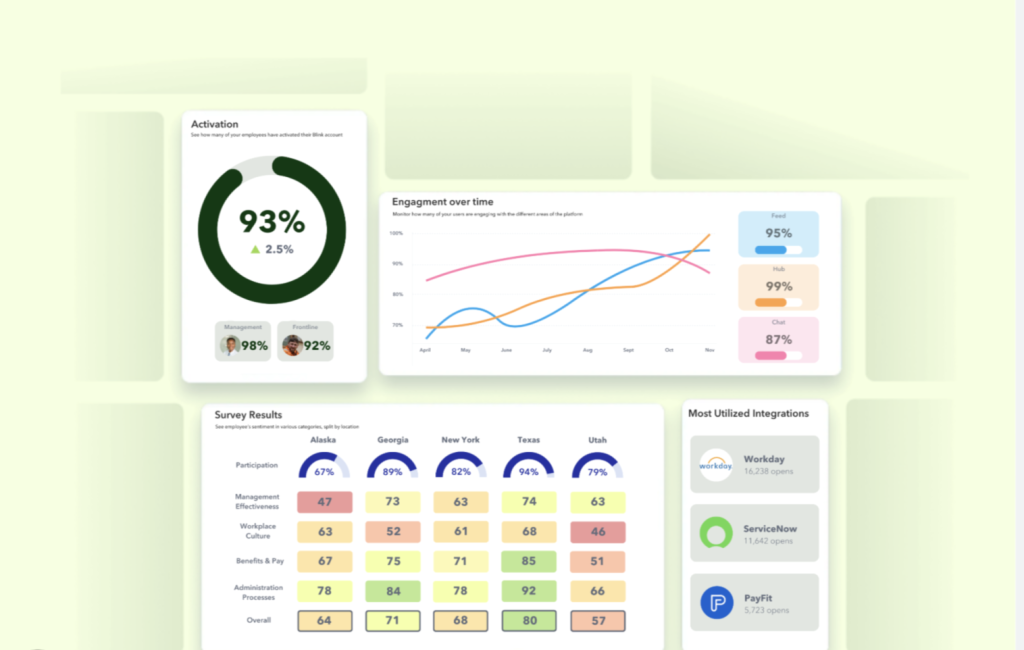
4. Assembly
- G2 Rating: 4.9/5
- Price: Starting at $2 per member/month
- Best For: Recognition and rewards programs
Assembly helps teams celebrate success and build culture through recognition. The simple interface makes it easy for teams to share wins and distribute rewards. The platform excels at connecting distributed teams.
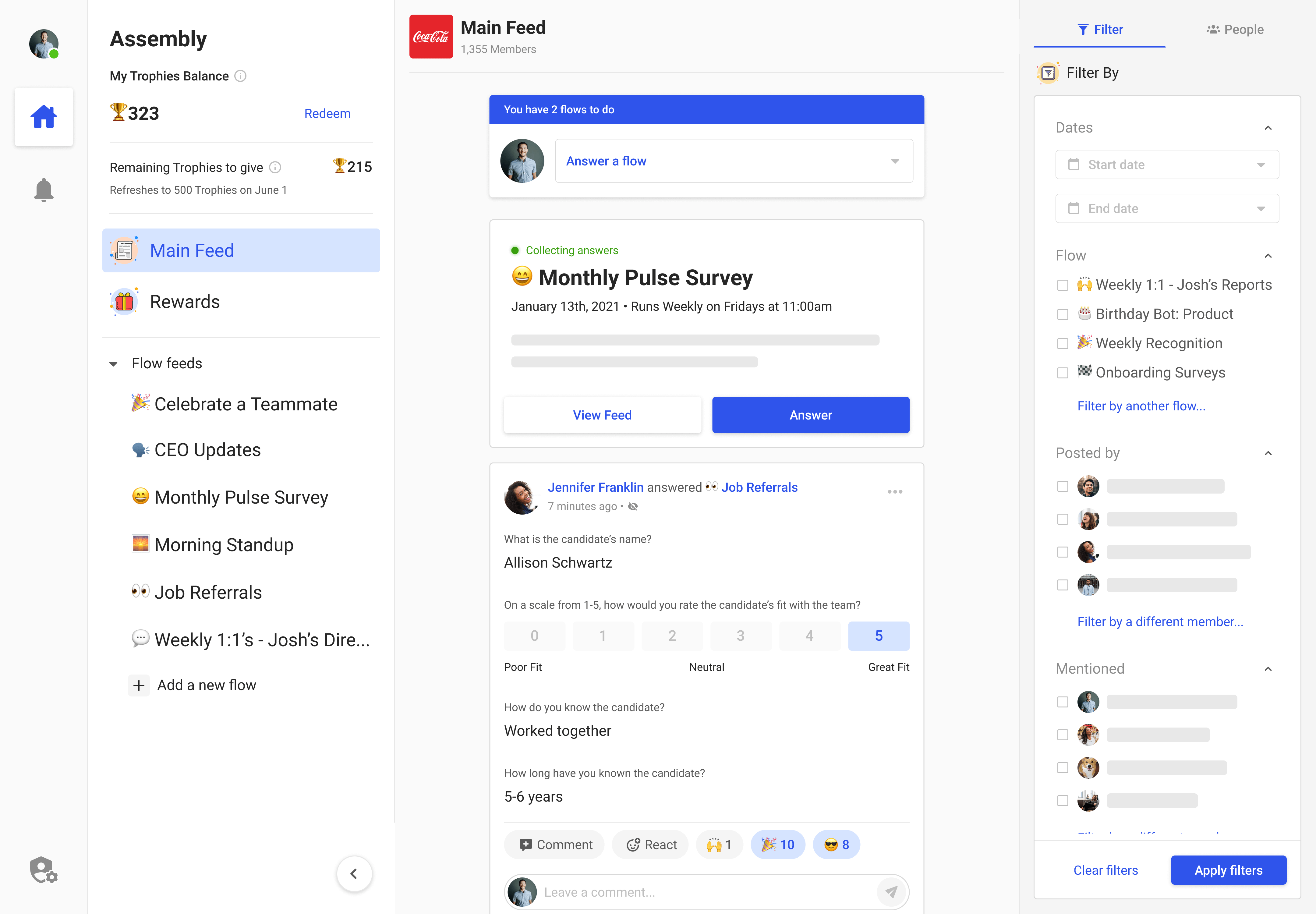
5. Staffbase
- G2 Rating: 4.6/5
- Price: Must contact sales
- Best For: Multi-channel communication
Staffbase helps HR teams manage all their communication channels from one place. Its content scheduling and engagement tools work well for larger organizations. The platform offers strong customization options and support.
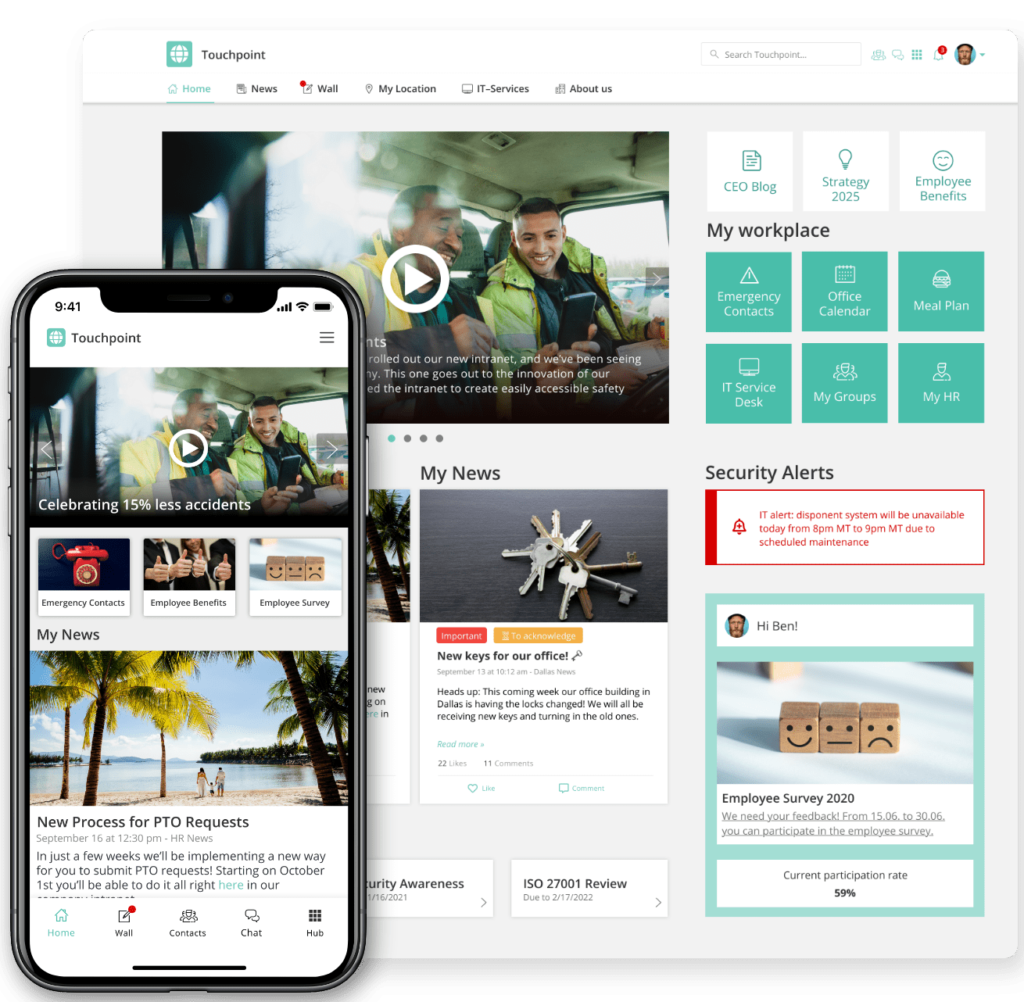
6. YOOBIC
- G2 Rating: 4.6/5
- Price: Contact sales
- Best For: Frontline employees
YOOBIC combines training, tasks, and communication for frontline teams. The platform simplifies daily operations and keeps teams aligned. Users praise the customer support and the operational improvements they see.
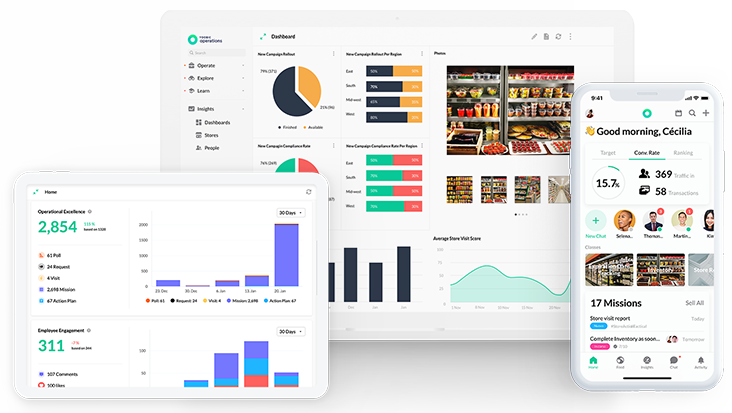
7. Sociabble
- G2 Rating: 4.7/5
- Price: Contact sales
- Best For: Employee advocacy and engagement
Sociabble turns employees into brand advocates while keeping them engaged. Its content sharing and gamification features work well for building a social media presence. Teams appreciate its intuitive design.
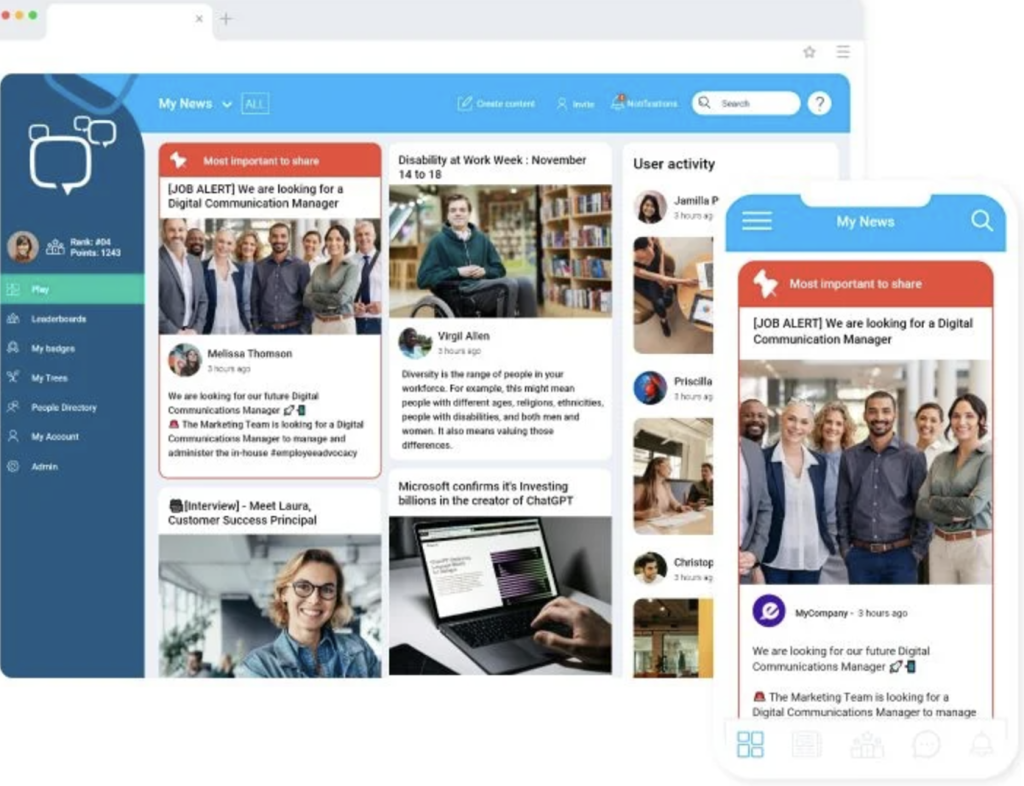
8. Axonify
- G2 Rating: 4.7/5
- Price: Contact sales
- Best For: Learning and workforce development
Axonify uses AI to help teams improve learning and development by retaining knowledge better. The science-backed approach shows real results in performance improvement. Users appreciate how the platform adapts to individual learning needs.
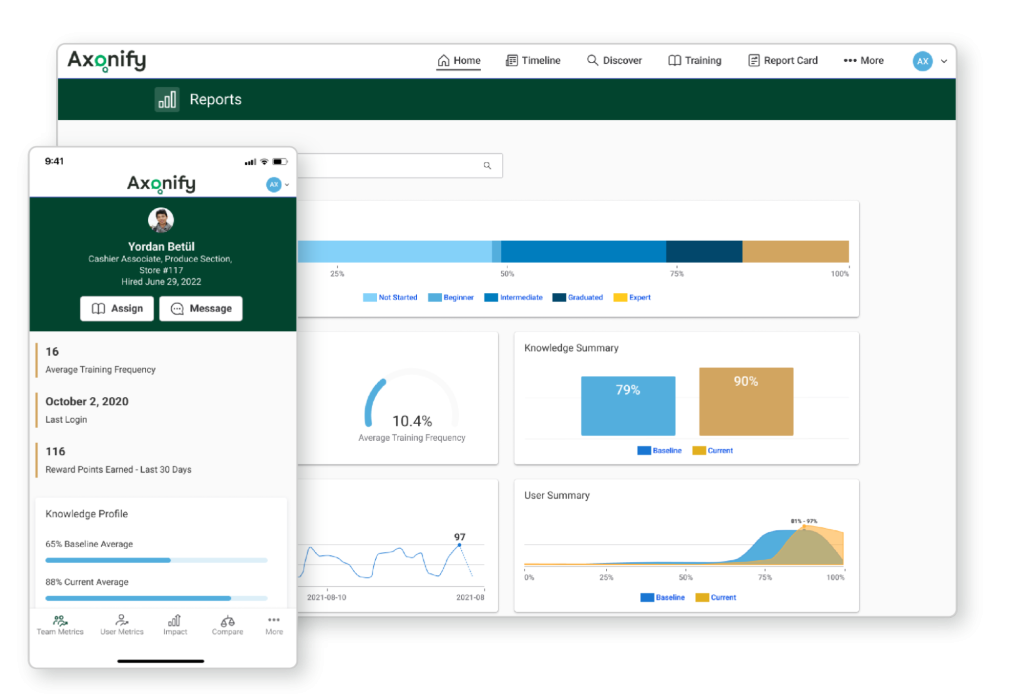
9. DSMN8
- G2 Rating: 4.6/5
- Price: Starting at $699 per month
- Best For: Employee advocacy programs
DSMN8 specializes in helping employees share company content effectively. Its scheduling and gamification features make advocacy engaging and simple. The platform’s social media integration also works smoothly.
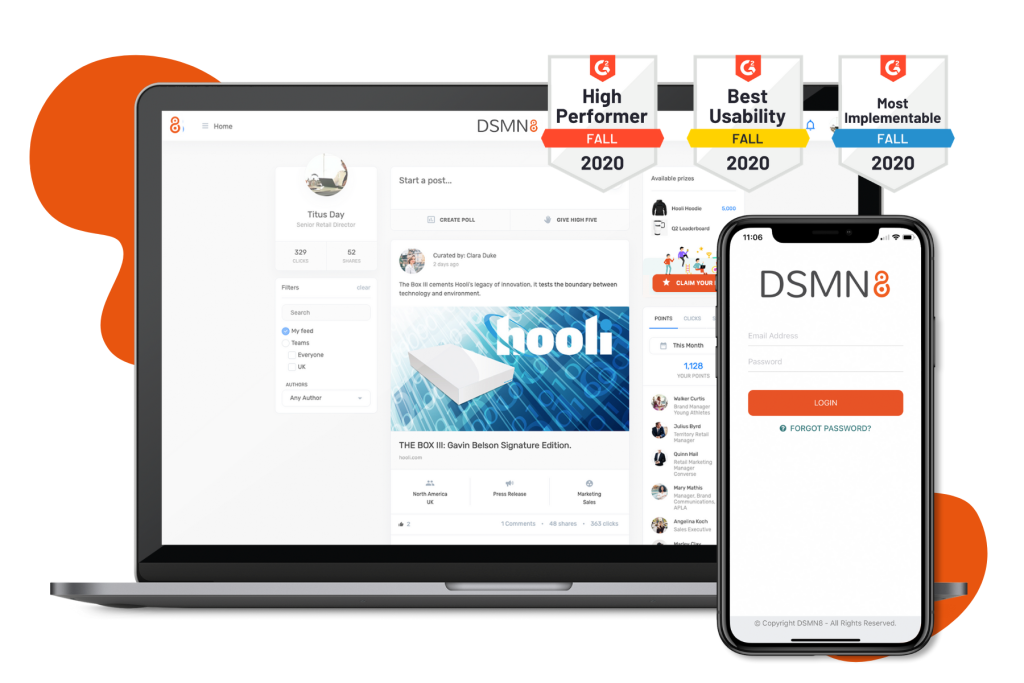
10 Tips to Improve HR Communication
Knowing the best practices makes creating better workplace communication easier. Here’s how leading HR teams build stronger connections.
- Start strong with onboarding: Set communication expectations from day one. Effective employee onboarding shows new hires exactly how to find information, who to ask for help, and where important resources live. This clarity helps new employees feel confident and connected.
- Align with company goals: Connect communications to your company’s bigger picture. When sharing updates or changes, explain how they support company goals. This helps employees understand the why behind decisions and see how their work matters.
- Listen and respond: Create regular chances for feedback through surveys, meetings, and digital channels. More importantly, show employees how their input shapes decisions. Quick responses to questions and concerns build trust.
- Keep resources accessible: Make important information easy to find. Build a central digital hub for policies, forms, and guides. Use clear titles and strong search features. When employees can find answers themselves, everyone saves time and frustration. Organizations should invest in employee self-service tools and create a branded internet portal. With Whatfix DAP, create in-app tutorials to accelerate time-to-proficiency and guide employees through different HR tasks. Quickly onboard new employees with Task Lists, allowing them to progress through a series of in-app Tasks contextual to their role. Flows provide step-by-step guidance on infrequent scenarios or complex tasks. Smart Tips provide additional knowledge or nudge employees to take a specific action.
- Choose channels wisely: Use the right channel for each message. For example, you might keep all of your informal communications in Slack. Then, for larger announcements or changes, you may decide to go with video or email.
- Stay consistent: Develop a clear communication style and stick to it. Keep your tone professional but approachable. When employees know what to expect from HR communication, they’re more likely to engage with it.
- Time it right: Consider when employees are most likely to receive different types of communication. Send important updates when people can focus on them. Avoid overwhelming teams with too many messages at once. Space out your communications whenever possible.
- Make it personal: Address individual needs or concerns when they come up. For example, segment communications when it makes sense. Personalize messages for different departments or roles. Show you understand each team’s challenges.
- Measure and adjust: Track how well your communications work. Watch open rates, engagement levels, and feedback. Test different approaches and learn what resonates. You can use this data to improve your communication strategy. Whatfix provides HR application owners and IT managers with a tool to create in-app surveys to collect feedback inside their applications. These can be open- or close-ended questions, surveys, questionnaires, interviews, and focus groups designed around different aspects of the product experience, from ease of use to effectiveness.
- Find your communication champions: Identify people across the organization who can help spread important messages. Train managers in good communication practices. Also, create networks of team members who can share feedback about what’s working and what’s not.
HR Communication FAQs
What are the benefits of effective HR communication?
Strong HR communication creates a clearer understanding across organizations. It helps employees feel connected to company goals and valued in their roles. When HR teams communicate well, they see better engagement, faster problem-solving, and stronger company culture.
What challenges do HR teams face with communication?
The specific challenges depend on your team. For example, information overload makes it harder to get important messages noticed. Cultural and language differences also may require you to rethink your communication strategy.
How can HR teams measure the effectiveness of communication?
Track metrics like message open rates, intranet usage, and survey responses. Watch how quickly new information spreads too. Then, look for employee feedback and engagement scores to get more insight and find any gaps.
How is HR communication changing?
Communication keeps evolving with workplace needs. Video content helps build personal connections across distances. AI tools help personalize and target messages more effectively. Social features make communication interactive and engaging. The future is moving toward more personalized, data-driven communication strategies.
HR Communication Clicks Better With Whatfix
A digital adoption platform will help you coach your end-users through your HR communication platform of choice so they can use it confidently and run through workflows faster and more efficiently. That’s where Whatfix comes in: our DAP suite is designed to enable enterprises to streamline the adoption process with tailored features such as:
- Interactive Walkthroughs: Guide employees through processes step-by-step.
- Contextual Tooltips: Provide relevant information and tips within the HR platform interface.
- Self-Help Menus: Offer easy access to FAQs, tutorials, and knowledge base articles.
- Task Lists: Break down complex tasks into manageable steps for employees.
- In-App Announcements: Communicate updates and changes directly within the platform.
- Performance Analytics: Track user engagement and identify areas for improvement.
- Personalized Recommendations: Suggest relevant resources based on user behavior and preferences.
- Multilingual Support: Localize UI text, prompts, and alerts into 70+ languages.
- Compliance Training: Deliver mandatory compliance training modules seamlessly






